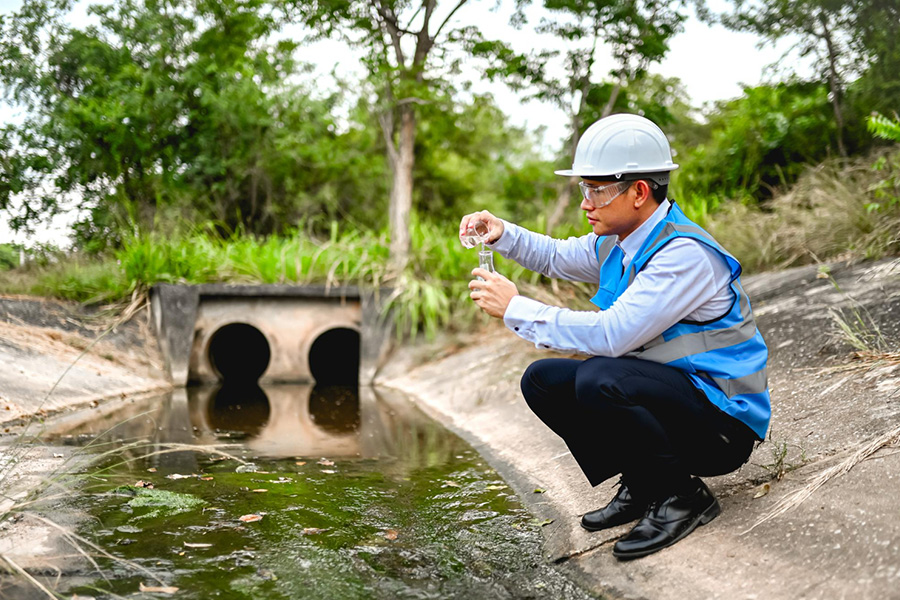
Groundwater in northern India’s Marginal Ganga Alluvial Plain is contaminated with fluoride and nitrate, posing health risks, particularly in rural areas, emphasizing the need for targeted mitigation and sustainable management practices.
Authors
Dev Sen Gupta, Defence Geoinformatics Research Establishment, Defence Research & Development Organisation, Sector-37A, Chandigarh, 160036, India
Ashwani Raju, Remote Sensing & GIS Laboratory, Department of Geology, Institute of Science, Banaras Hindu University, Uttar Pradesh, Varanasi, 221005, India
Abhinav Patel, Hydrogeology Laboratory, Department of Geology, Institute of Science, Banaras Hindu University, Uttar Pradesh, Varanasi, 221005, India
Surendra Kumar Chandniha, College of Agricultural Engineering and Technology & Research Station, Indira Gandhi Krishi Vishwavidyalaya, Chhattisgarh, Raipur, 495334, India
Vaishnavi Sahu, Department of Botany, Institute of Science, Banaras Hindu University, Uttar Pradesh, Varanasi, 221005, India
Ankit Kumar, School of Hydrology and Water Resources, Nanjing University of Information Science and Technology, Nanjing, 211544, China
Amit Kumar, Remote Sensing & GIS Laboratory, Department of Geology, Institute of Science, Banaras Hindu University, Uttar Pradesh, Varanasi, 221005, India
Rupesh Kumar, Associate Professor, Jindal Global Business School, O.P. Jindal Global University, Sonipat, Haryana, India
Samyah Salem Refadah, Department of Geography and GIS, Faculty of Arts and Humanities, King Abdulaziz University, Jeddah, 21589, Saudi Arabia
Summary
Groundwater contamination with sub-lethal dissolved contaminants poses significant health risks globally, especially in rural India, where access to safe drinking water remains a critical challenge. This study explores the hydrogeochemical characterization and associated health risks of groundwater from shallow aquifers in the Marginal Ganga Alluvial Plain (MGAP) of northern India. The groundwater chemistry is dominated by Ca-Mg-CO3 and Ca-Mg-Cl types, where there is dominance of silicate weathering and the ion-exchange processes are responsible for this solute composition in the groundwater.
All the ionic species are within the permissible limits of the World Health Organization, except fluoride (F−) and nitrate (NO3−). Geochemical analysis using bivariate relationships and saturation plots attributes the occurrence of F− to geogenic sources, primarily the chemical weathering of granite-granodiorite, while NO3− contaminants are linked to anthropogenic inputs, such as nitrogen-rich fertilizers, in the absence of a large-scale urban environment. Multivariate statistical analyses, including hierarchical cluster analysis and factor analysis, confirm the predominance of geogenic controls, with NO3−-enriched samples derived from anthropogenic factors. The spatial distribution and probability predictions of F− and NO3− were generated using a non-parametric co-kriging technique approach, aiding in the delineation of contamination hotspots. The integration of the USEPA human health risk assessment methodology with the urbanization index has revealed critical findings, identifying approximately 23% of the study area as being at high risk. This comprehensive approach, which synergizes geospatial analysis and statistical methods, proves to be highly effective in delineating priority zones for health intervention.
The results highlight the pressing need for targeted mitigation measures and the implementation of sustainable groundwater management practices at regional, national, and global levels.
Published in: Water (Switzerland)
To read the full article, please click here.

